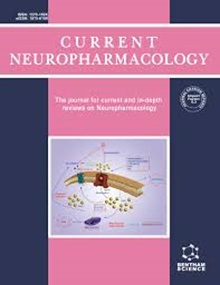Current Insights into the Neurotoxicity of Melamine: A Comprehensive Review
IF 4.8
2区 医学
Q1 NEUROSCIENCES
引用次数: 0
Abstract
: Melamine, a heterocyclic nitrogen-rich triazine chemical compound, is widely used in various household products, including furniture, dinnerware, and kitchen appliances. The unauthorized addition of the mixture to various foodstuffs to misrepresent protein content resulted in catastrophic, frequently life-threatening health consequences for kids as well as canines and has garnered international attention. Numerous primary studies and evaluations have been focused on melamine toxicity's implications on kidney function. Despite the profusion of literature on melamine's nephrotoxicity, evidence regarding its toxicity to other organs remains scarce. A number of recent studies suggest melamine can disrupt central nervous system (CNS) function and bring about cognitive impairments, contradicting the commonly held belief that melamine's detrimental effects are limited to the urinary system. The accumulation of melamine in the body is linked to various adverse effects, including depression, impaired synaptic transmission, oxidative stress, and neurodegenerative diseases. Several mechanisms may lead to such complications. However, numerous safeguards against melamine accumulation have been identified. This review could shed light on the potential neurological effects and mechanisms underlying melamine toxicity. Afterward, we will dive into the body's possible protectivemechanisms against melamine-induced toxicity.目前对三聚氰胺神经毒性的认识:全面回顾
:三聚氰胺是一种富含氮的杂环三嗪化合物,广泛用于家具、餐具和厨房用具等各种家用产品。未经许可将这种混合物添加到各种食品中以虚报蛋白质含量,给儿童和犬类造成了灾难性的健康后果,经常危及生命,引起了国际社会的关注。大量的初步研究和评估都集中在三聚氰胺毒性对肾功能的影响上。尽管有关三聚氰胺肾毒性的文献很多,但有关三聚氰胺对其他器官毒性的证据仍然很少。最近的一些研究表明,三聚氰胺会破坏中枢神经系统(CNS)的功能并导致认知障碍,这与人们普遍认为三聚氰胺的有害影响仅限于泌尿系统的观点相矛盾。三聚氰胺在人体内的积累与各种不良影响有关,包括抑郁、突触传递受损、氧化应激和神经退行性疾病。导致这些并发症的机制有多种。不过,目前已经发现了许多防止三聚氰胺积累的措施。这篇综述可以阐明三聚氰胺毒性对神经系统的潜在影响及其机制。随后,我们将深入探讨人体对三聚氰胺毒性的可能保护机制。
本文章由计算机程序翻译,如有差异,请以英文原文为准。
求助全文
约1分钟内获得全文
求助全文
来源期刊

Current Neuropharmacology
医学-神经科学
CiteScore
8.70
自引率
1.90%
发文量
369
审稿时长
>12 weeks
期刊介绍:
Current Neuropharmacology aims to provide current, comprehensive/mini reviews and guest edited issues of all areas of neuropharmacology and related matters of neuroscience. The reviews cover the fields of molecular, cellular, and systems/behavioural aspects of neuropharmacology and neuroscience.
The journal serves as a comprehensive, multidisciplinary expert forum for neuropharmacologists and neuroscientists.
 求助内容:
求助内容: 应助结果提醒方式:
应助结果提醒方式:


